1 概述
CountDownLatch是一个同步辅助类,通过AQS实现的一个闭锁。
在其他线程完成它们的操作之前,允许一个多个线程等待。
简单来说,CountDownLatch中有一个锁计数,在计数到达0之前,线程会一直等待。
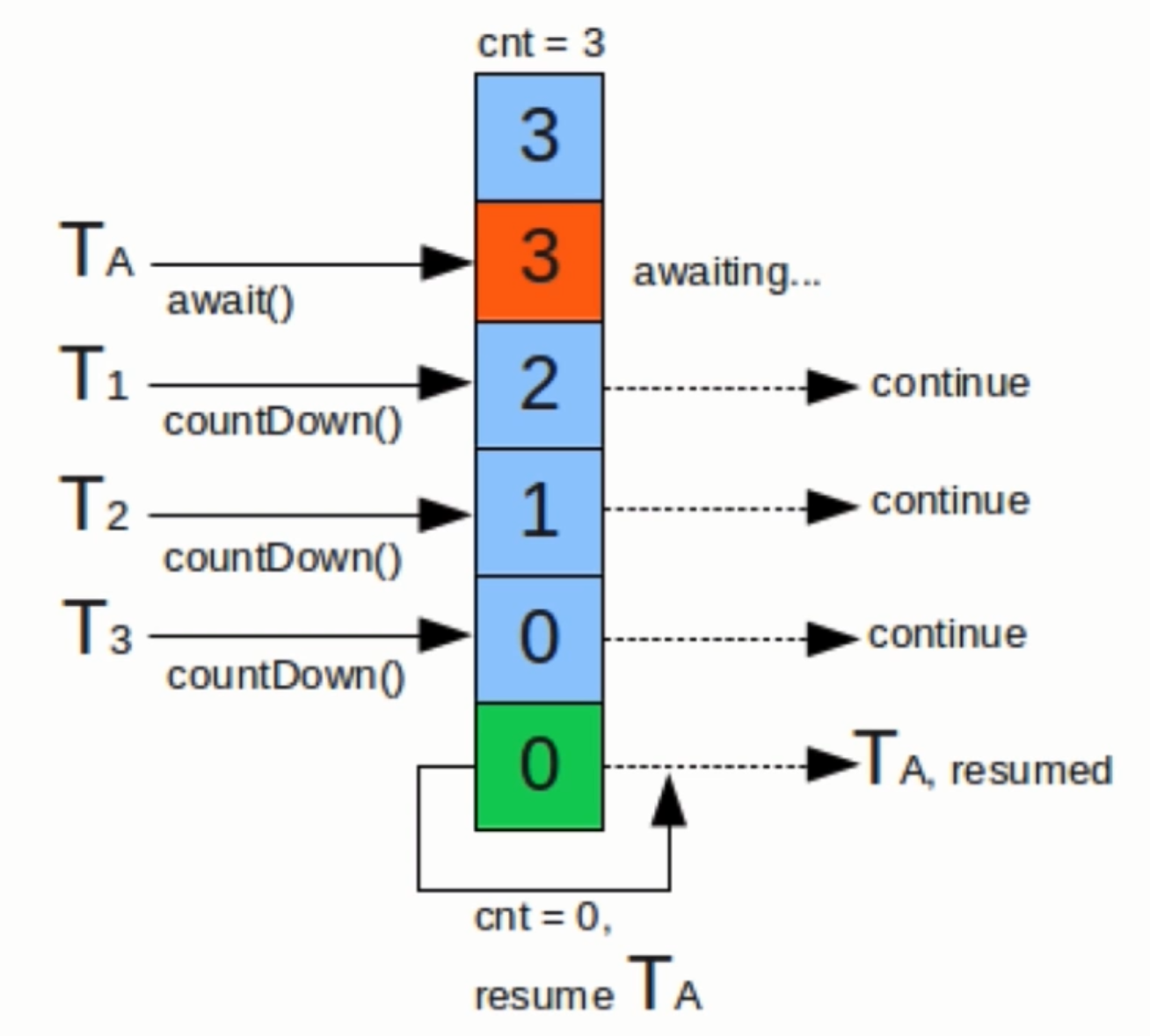
运行机制
2 数据结构
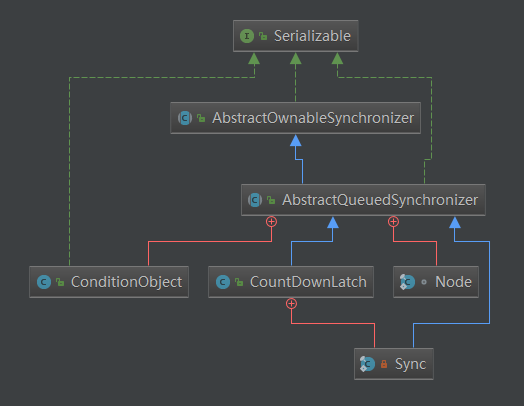
继承关系
CountDownLatch是一个"共享锁”",内部定义了自己的同步器
Sync,
Sync继承自AQS,实现了
tryAcquireShared和
tryReleaseShared两个方法。
CountDownLatch中的锁是响应中断的,如果线程在对锁进行操作期间发生中断,会直接抛出InterruptedException
3 源码解析

构造方法
CountDownLatch中的count其实就是AQS的state

从构造函数中可以看出,
CountDownLatch"锁计数"本质上就是AQS的资源数
state
下面我们将通过await()和countDown()分析CountDownLatch的"latch"原理
3.1 await()
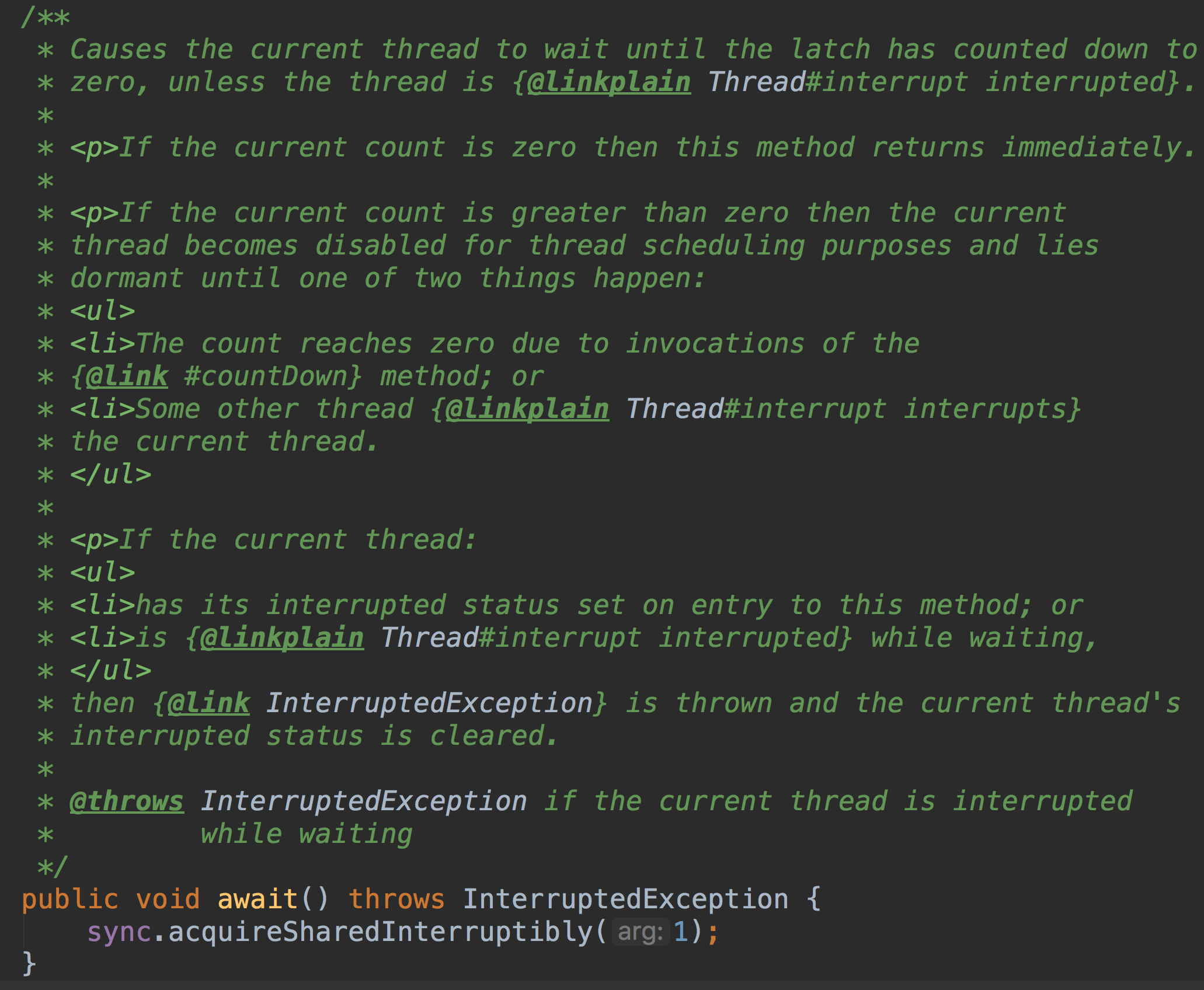
await()
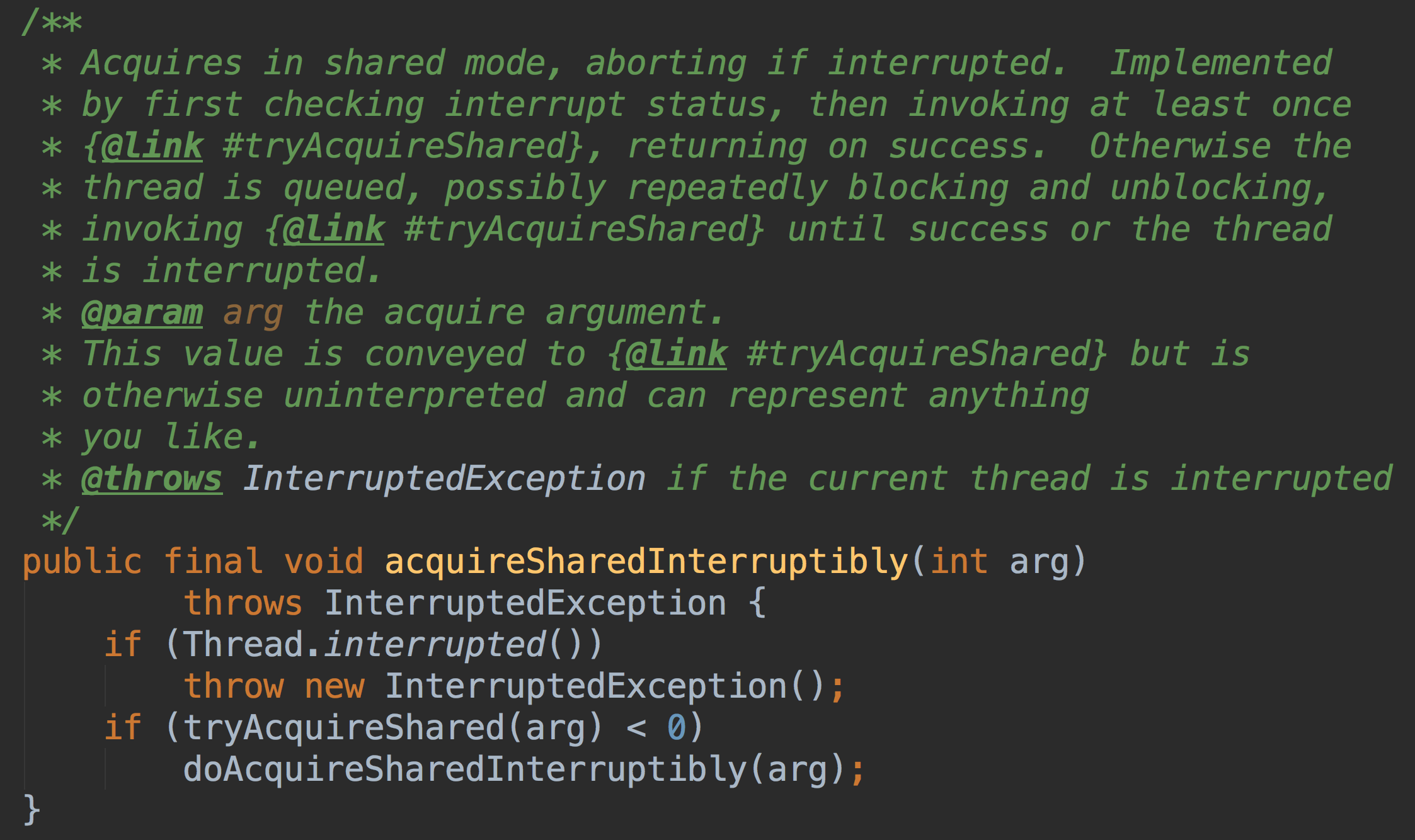
AQS中`acquireSharedInterruptibly(1)`的实现
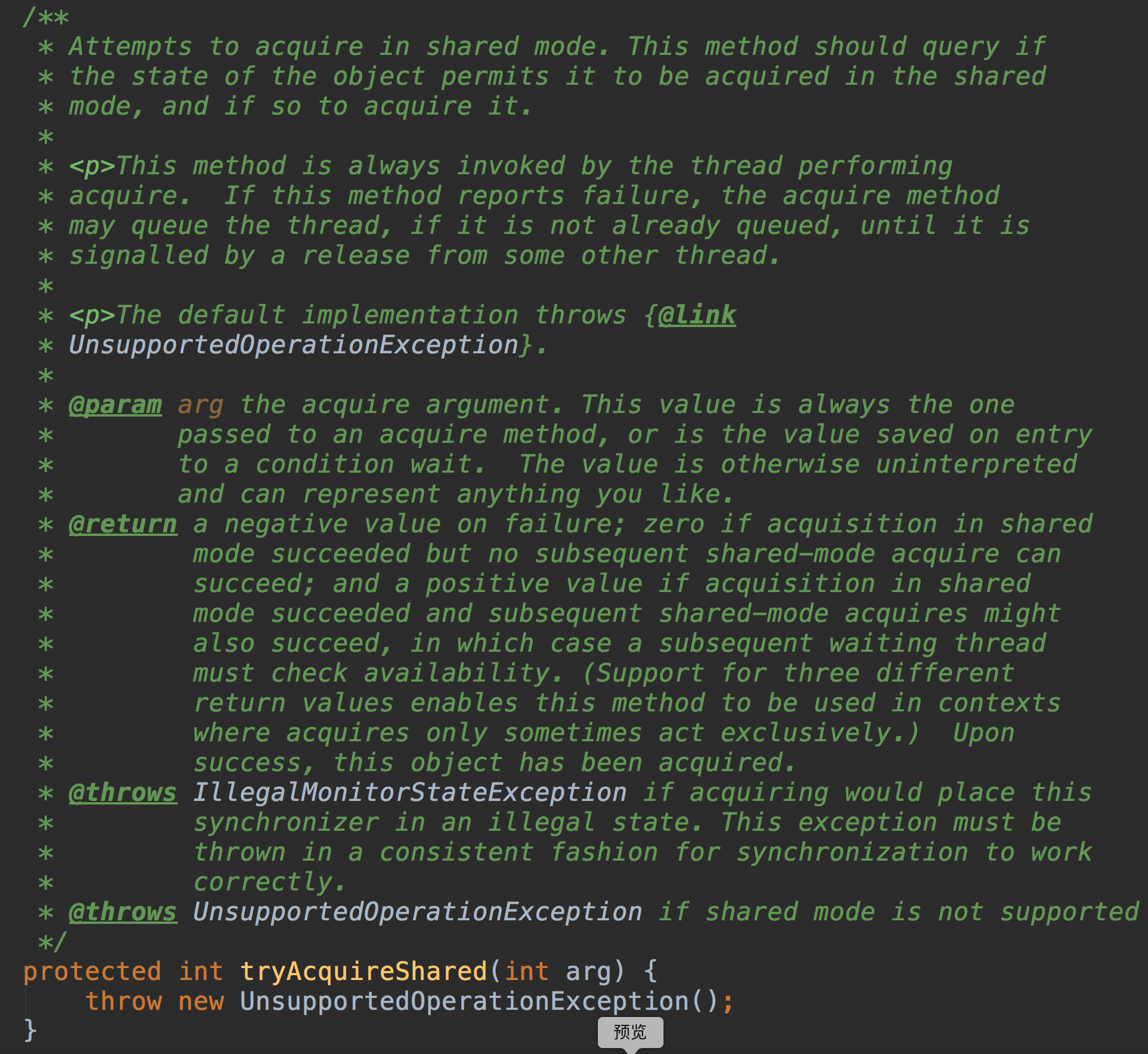
tryAcquireShared在CountDownLatch中的实现
await()的实现非常简单,就是通过对资源
state剩余量
state==0 ? 1 : -1来判断是否获取到锁。
tryAcquireShared函数规定返回值类型
- 成功获取并且还有可用资源返回正数
- 成功获取但是没有可用资源时返回0
- 获取资源失败返回一个负数
即只要state!=0,线程就进入等待队列阻塞
countDown()
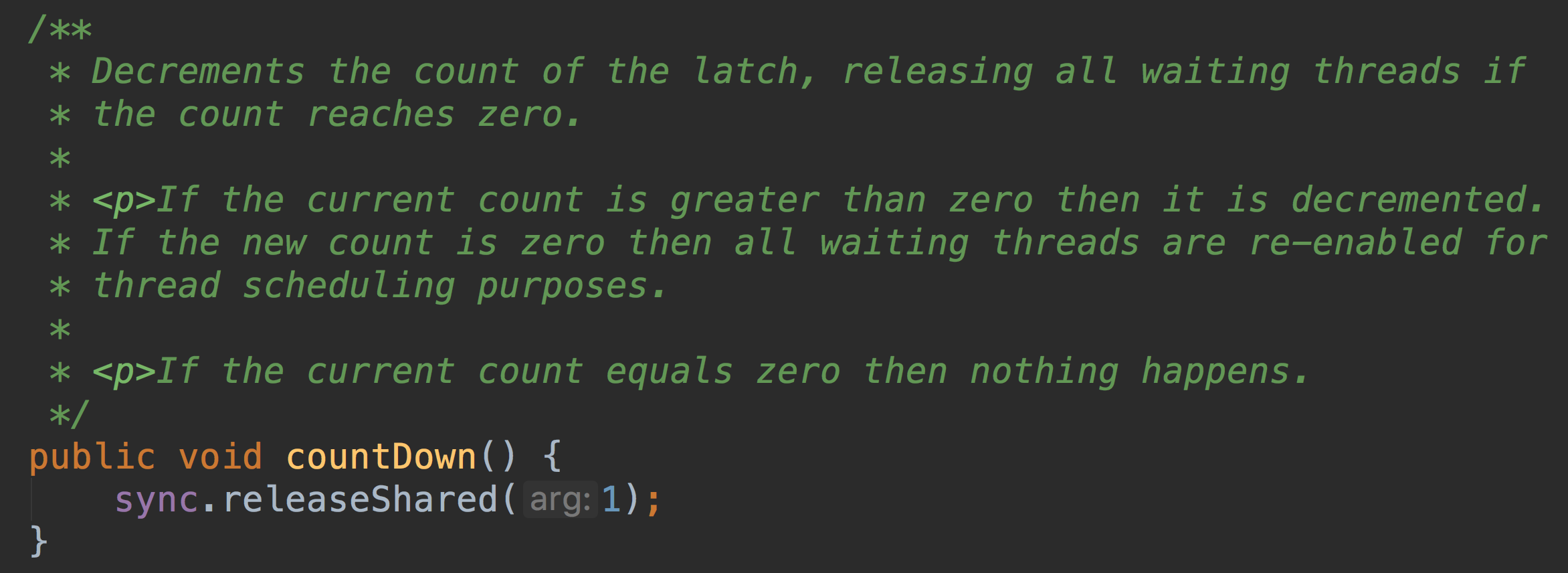
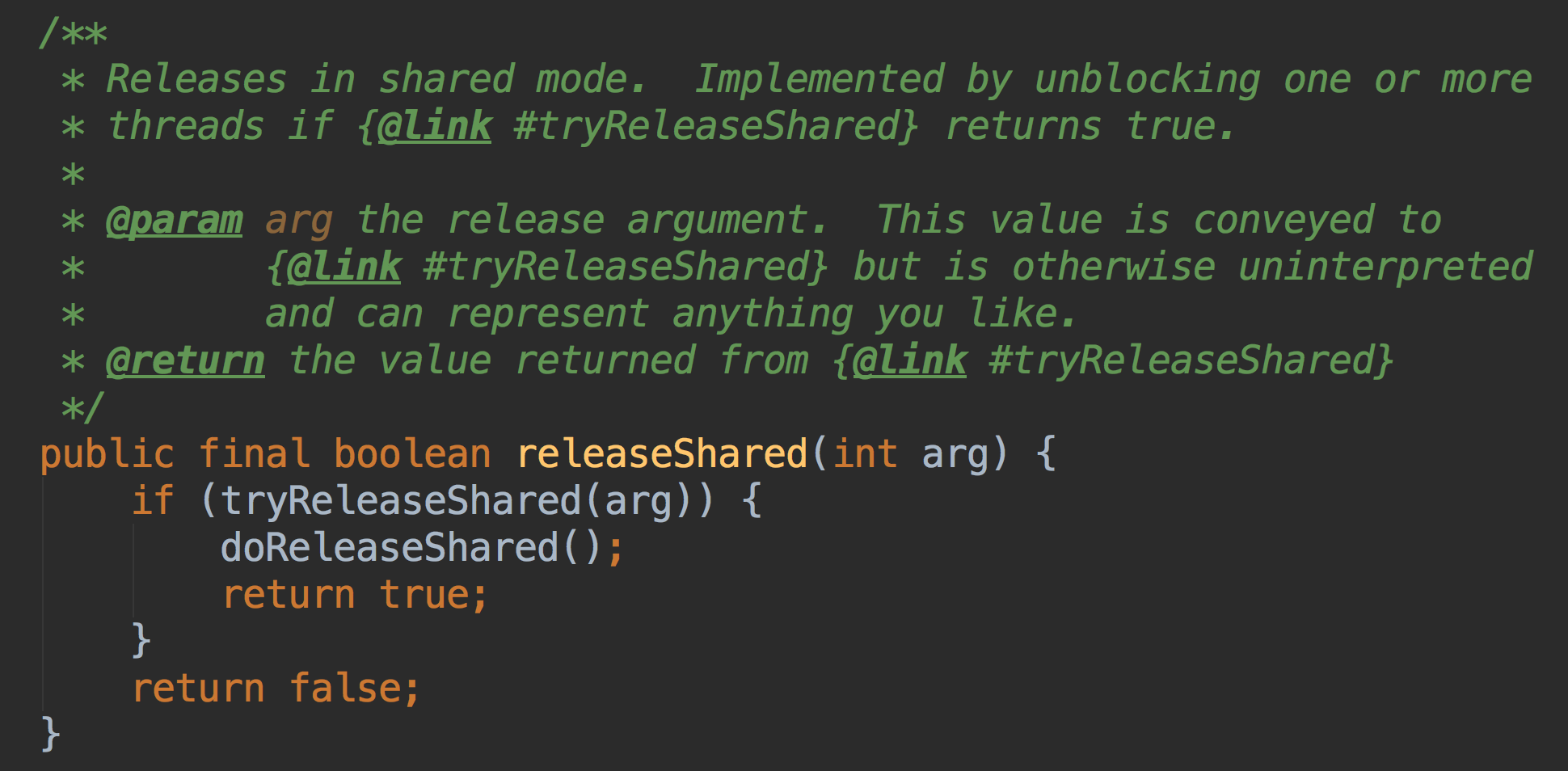
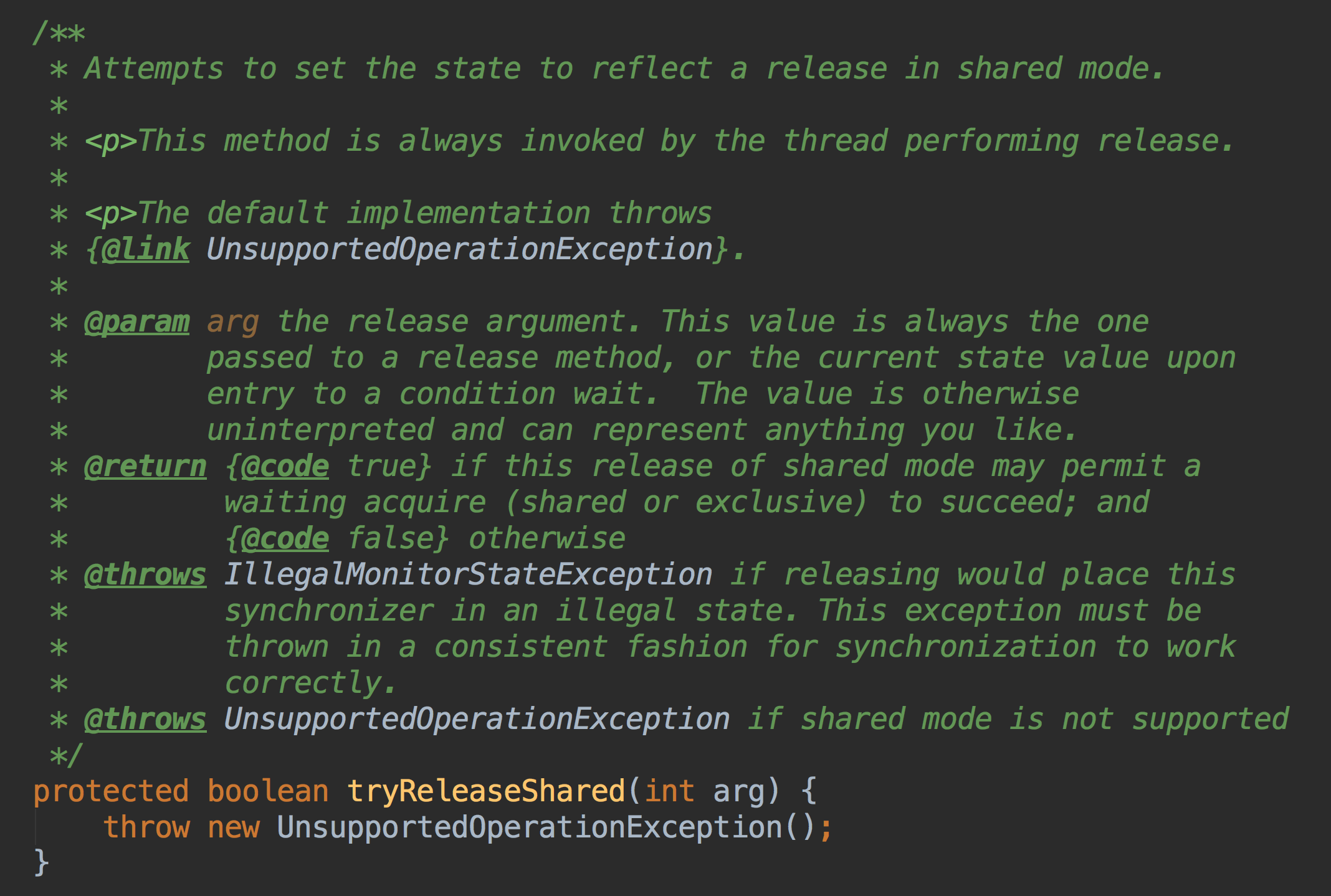
说明:如果释放资源后
state==0,说明已经到达latch,此时就可以调用
doReleaseShared唤醒等待的线程。
相对其他同步类来说,CountDownLatch可以说是最简单的同步类实现了。它完全依赖了AQS,只要理解了AQS,那么理解它就不成问题
package java.util.concurrent;
import java.util.concurrent.locks.AbstractQueuedSynchronizer;
/**
* A synchronization aid that allows one or more threads to wait until
* a set of operations being performed in other threads completes.
*
* <p>A {@code CountDownLatch} is initialized with a given <em>count</em>.
* The {@link #await await} methods block until the current count reaches
* zero due to invocations of the {@link #countDown} method, after which
* all waiting threads are released and any subsequent invocations of
* {@link #await await} return immediately. This is a one-shot phenomenon
* -- the count cannot be reset. If you need a version that resets the
* count, consider using a {@link CyclicBarrier}.
*
* <p>A {@code CountDownLatch} is a versatile synchronization tool
* and can be used for a number of purposes. A
* {@code CountDownLatch} initialized with a count of one serves as a
* simple on/off latch, or gate: all threads invoking {@link #await await}
* wait at the gate until it is opened by a thread invoking {@link
* #countDown}. A {@code CountDownLatch} initialized to <em>N</em>
* can be used to make one thread wait until <em>N</em> threads have
* completed some action, or some action has been completed N times.
*
* <p>A useful property of a {@code CountDownLatch} is that it
* doesn't require that threads calling {@code countDown} wait for
* the count to reach zero before proceeding, it simply prevents any
* thread from proceeding past an {@link #await await} until all
* threads could pass.
*
* <p><b>Sample usage:</b> Here is a pair of classes in which a group
* of worker threads use two countdown latches:
* <ul>
* <li>The first is a start signal that prevents any worker from proceeding
* until the driver is ready for them to proceed;
* <li>The second is a completion signal that allows the driver to wait
* until all workers have completed.
* </ul>
*
* <pre> {@code
* class Driver { // ...
* void main() throws InterruptedException {
* CountDownLatch startSignal = new CountDownLatch(1);
* CountDownLatch doneSignal = new CountDownLatch(N);
*
* for (int i = 0; i < N; ++i) // create and start threads
* new Thread(new Worker(startSignal, doneSignal)).start();
*
* doSomethingElse(); // don't let run yet
* startSignal.countDown(); // let all threads proceed
* doSomethingElse();
* doneSignal.await(); // wait for all to finish
* }
* }
*
* class Worker implements Runnable {
* private final CountDownLatch startSignal;
* private final CountDownLatch doneSignal;
* Worker(CountDownLatch startSignal, CountDownLatch doneSignal) {
* this.startSignal = startSignal;
* this.doneSignal = doneSignal;
* }
* public void run() {
* try {
* startSignal.await();
* doWork();
* doneSignal.countDown();
* } catch (InterruptedException ex) {} // return;
* }
*
* void doWork() { ... }
* }}</pre>
*
* <p>Another typical usage would be to divide a problem into N parts,
* describe each part with a Runnable that executes that portion and
* counts down on the latch, and queue all the Runnables to an
* Executor. When all sub-parts are complete, the coordinating thread
* will be able to pass through await. (When threads must repeatedly
* count down in this way, instead use a {@link CyclicBarrier}.)
*
* <pre> {@code
* class Driver2 { // ...
* void main() throws InterruptedException {
* CountDownLatch doneSignal = new CountDownLatch(N);
* Executor e = ...
*
* for (int i = 0; i < N; ++i) // create and start threads
* e.execute(new WorkerRunnable(doneSignal, i));
*
* doneSignal.await(); // wait for all to finish
* }
* }
*
* class WorkerRunnable implements Runnable {
* private final CountDownLatch doneSignal;
* private final int i;
* WorkerRunnable(CountDownLatch doneSignal, int i) {
* this.doneSignal = doneSignal;
* this.i = i;
* }
* public void run() {
* try {
* doWork(i);
* doneSignal.countDown();
* } catch (InterruptedException ex) {} // return;
* }
*
* void doWork() { ... }
* }}</pre>
*
* <p>Memory consistency effects: Until the count reaches
* zero, actions in a thread prior to calling
* {@code countDown()}
* <a href="package-summary.html#MemoryVisibility"><i>happen-before</i></a>
* actions following a successful return from a corresponding
* {@code await()} in another thread.
*
* @since 1.5
* @author Doug Lea
*/
public class CountDownLatch {
/**
* Synchronization control For CountDownLatch.
* Uses AQS state to represent count.
*/
private static final class Sync extends AbstractQueuedSynchronizer {
private static final long serialVersionUID = 4982264981922014374L;
Sync(int count) {
setState(count);
}
int getCount() {
return getState();
}
protected int tryAcquireShared(int acquires) {
return (getState() == 0) ? 1 : -1;
}
protected boolean tryReleaseShared(int releases) {
// Decrement count; signal when transition to zero
for (;;) {
int c = getState();
if (c == 0)
return false;
int nextc = c-1;
if (compareAndSetState(c, nextc))
return nextc == 0;
}
}
}
private final Sync sync;
/**
* Returns the current count.
*
* <p>This method is typically used for debugging and testing purposes.
*
* @return the current count
*/
public long getCount() {
return sync.getCount();
}
/**
* Returns a string identifying this latch, as well as its state.
* The state, in brackets, includes the String {@code "Count ="}
* followed by the current count.
*
* @return a string identifying this latch, as well as its state
*/
public String toString() {
return super.toString() + "[Count = " + sync.getCount() + "]";
}
}




